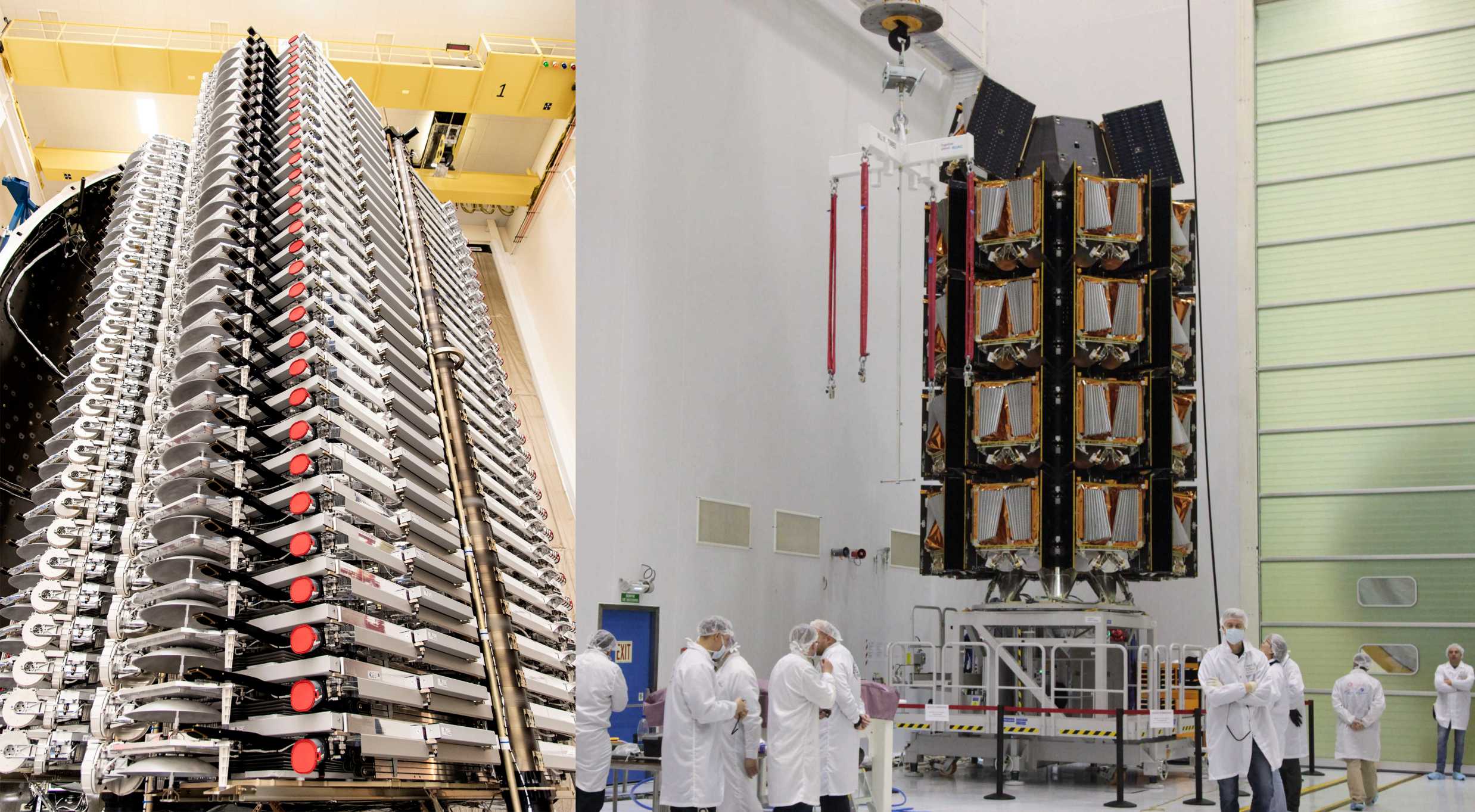
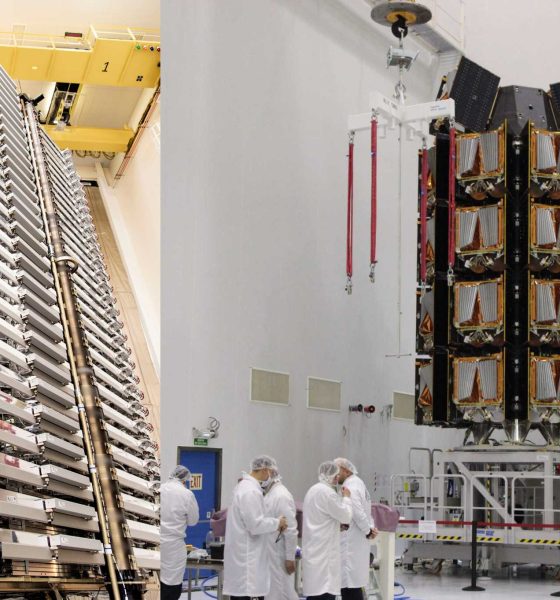
News
SpaceX's main Starlink constellation competitor is running out of money
OneWeb, the only pressing competitor facing SpaceX’s Starlink satellite internet constellation, has reportedly begun to consider filing for bankruptcy shortly before the London-based company completed its third dedicated launch.
Following the completion of its first full 34-satellite launch with a Russian Soyuz rocket on February 7th, OneWeb managed to complete a second launch on March 22nd just a few days after Bloomberg revealed its bankruptcy concerns. OneWeb now has 74 ~150-kg (330 lb) satellites in orbit – roughly 11% of its initial 650-satellite constellation. Like SpaceX, OneWeb’s goal is to manufacture and launch an unprecedented number of high-performance small satellites for a per-spacecraft cost that would have previously been inconceivable.
SpaceX’s Starlink, OneWeb, Telesat, Amazon Project Kuiper, and other prospective low Earth orbit (LEO) communications constellations all aim to provide high-speed, low-latency internet services to users almost anywhere on the surface of Earth. First and foremost, those constellations would seek to provide service to those who want broadband internet but have yet to be connected through traditional ground-based means by existing internet service providers (ISPs) that are either unable or unwilling to do so. Simply put, that is not an easy goal and OneWeb now appears to be heading towards sunset despite the wealth of resources it at one point possessed.
Requiring numerous revolutions in satellite manufacturing, antenna production, and launch vehicle affordability, as well as a vast and complex network of ground terminals, numerous companies have tried and failed to rise to the challenge over the decades. Original Globalstar, Teledesic, and Iridium constellations all raised more than $10 billion in the 1990s under the promise of blanketing the Earth with internet from space. All wound up bankrupt at one point or another.
Globalstar eventually completed an operational constellation, as did Iridium. Piggybacking off of many painful lessons-learned, Iridium even managed to become profitable, stable, and sustainable enough to fund an entirely new replacement constellation, launched on eight SpaceX Falcon 9 missions and completed in January 2019.
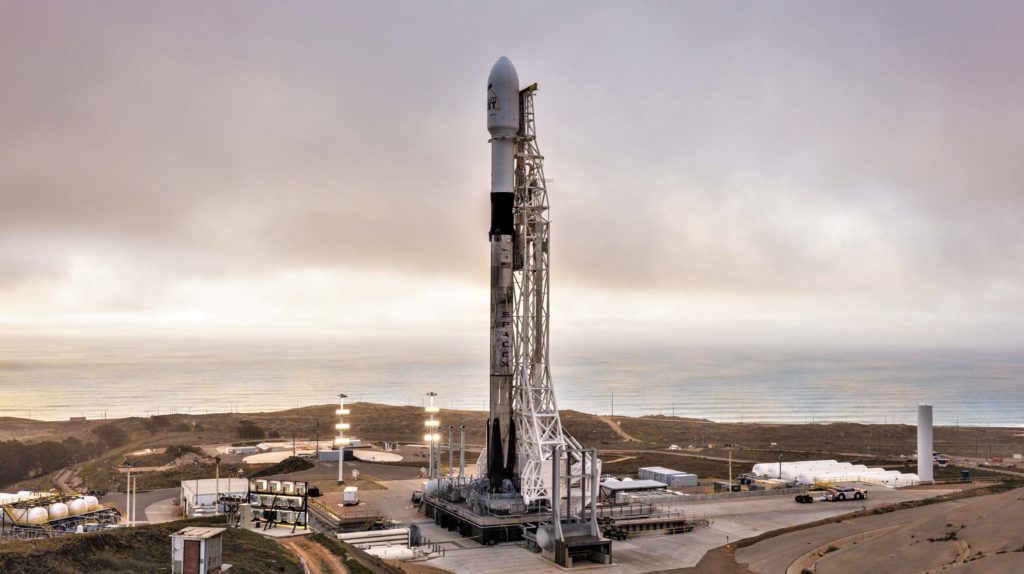
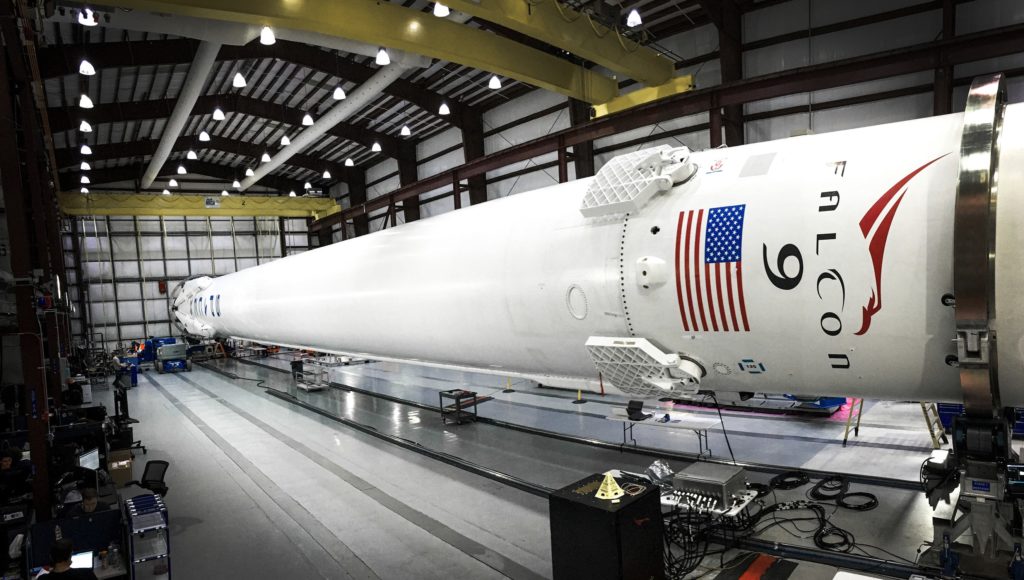
Short of a miracle, especially given the imminent economic catastrophe now facing much of the world, OneWeb appears to be close to becoming the latest body on a very tall pile. As if OneWeb learned nothing from the fates of those that came before, it has somehow managed to run out of money (or nearly so) despite having raised more than $3.4 billion in just four years. How OneWeb managed to turn $3.4 billion into a single factory and ~75 satellites in orbit is undoubtedly a mystery worth demystifying but for now, all that’s known is that the company is concerned about coronavirus impacts and anticipates imminent layoffs on top of future launch and production delays.
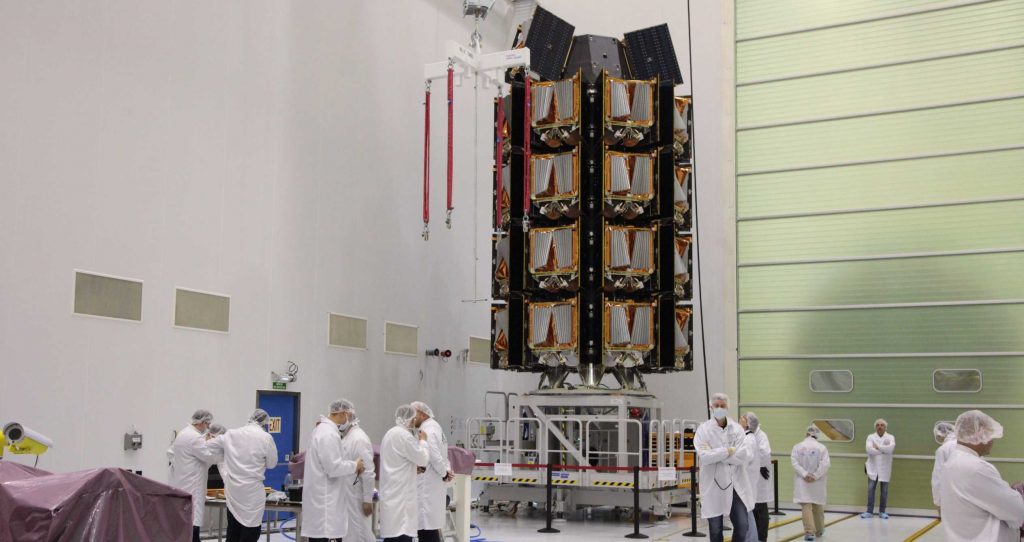
Ever the lone wolf, SpaceX forges ahead
Speaking earlier this month at the SATELLITE 2020 conference, SpaceX CEO Elon Musk frankly noted that Starlink – SpaceX’s exceptionally ambitious entrant to the LEO satellite internet race – was a work in progress with a real chance of failure. He made it clear that he was aware the constellation is now navigating a graveyard that has brought numerous companies with far more funding to their knees – now possibly including OneWeb. Nevertheless, SpaceX has shown no signs of slowing down. It’s possible – if not all but guaranteed – that the company’s Redmond, Washington-based has already been severely impacted by the coronovirus pandemic, given that the state is one of the US epicenters.
The company’s Los Angeles rocket factory is also likely to begin to experience major impacts as the city starts to take pandemic-related threats seriously. SpaceX’s Florida launch facilities and Texas Starship factory and development facilities are much less likely to be harmed in the interim. It’s another question entirely whether continuing to operate large factories and facilities is the right thing to do for SpaceX’s employees and the regions they reside in, whether states intervene or governments govern.
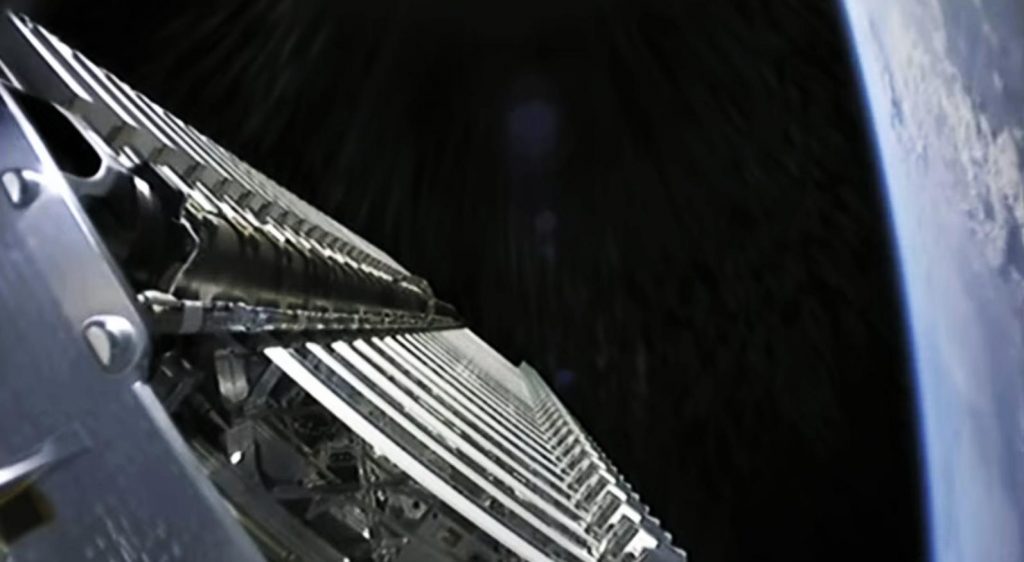
Nevertheless, thanks to the fact that SpaceX’s Washington factory has been building satellites 50% faster than it can launch them, it’s likely that at least one or two (if not several) launches worth of Starlink satellites are stockpiled and waiting to fly. The company’s next Starlink mission (Starlink L7 or V1 L6) is expected to launch no earlier than (NET) April 2020. The global pandemic could potentially create some open space in the company’s near-term manifest, but it could just as easily make SpaceX’s US launch activities next to impossible.
SpaceX has already delivered 360 Starlink satellites to orbit, 300 of which were launched in the last four months alone and all but ~10 of which are believed to still be operational. Barring increasingly likely delays from the growing pandemic, SpaceX anticipated it could have enough spacecraft in orbit (~500-600 satellites) to begin serving internet to customers in Canada and the northern US as early as this summer. For now, we’ll have to wait and see how things shake out in the coming weeks.
Check out Teslarati’s Marketplace! We offer Tesla accessories, including for the Tesla Cybertruck and Tesla Model 3.

Elon Musk
Starlink passes 9 million active customers just weeks after hitting 8 million
The milestone highlights the accelerating growth of Starlink, which has now been adding over 20,000 new users per day.

SpaceX’s Starlink satellite internet service has continued its rapid global expansion, surpassing 9 million active customers just weeks after crossing the 8 million mark.
The milestone highlights the accelerating growth of Starlink, which has now been adding over 20,000 new users per day.
9 million customers
In a post on X, SpaceX stated that Starlink now serves over 9 million active users across 155 countries, territories, and markets. The company reached 8 million customers in early November, meaning it added roughly 1 million subscribers in under seven weeks, or about 21,275 new users on average per day.
“Starlink is connecting more than 9M active customers with high-speed internet across 155 countries, territories, and many other markets,” Starlink wrote in a post on its official X account. SpaceX President Gwynne Shotwell also celebrated the milestone on X. “A huge thank you to all of our customers and congrats to the Starlink team for such an incredible product,” she wrote.
That growth rate reflects both rising demand for broadband in underserved regions and Starlink’s expanding satellite constellation, which now includes more than 9,000 low-Earth-orbit satellites designed to deliver high-speed, low-latency internet worldwide.
Starlink’s momentum
Starlink’s momentum has been building up. SpaceX reported 4.6 million Starlink customers in December 2024, followed by 7 million by August 2025, and 8 million customers in November. Independent data also suggests Starlink usage is rising sharply, with Cloudflare reporting that global web traffic from Starlink users more than doubled in 2025, as noted in an Insider report.
Starlink’s momentum is increasingly tied to SpaceX’s broader financial outlook. Elon Musk has said the satellite network is “by far” the company’s largest revenue driver, and reports suggest SpaceX may be positioning itself for an initial public offering as soon as next year, with valuations estimated as high as $1.5 trillion. Musk has also suggested in the past that Starlink could have its own IPO in the future.
News
NVIDIA Director of Robotics: Tesla FSD v14 is the first AI to pass the “Physical Turing Test”
After testing FSD v14, Fan stated that his experience with FSD felt magical at first, but it soon started to feel like a routine.

NVIDIA Director of Robotics Jim Fan has praised Tesla’s Full Self-Driving (Supervised) v14 as the first AI to pass what he described as a “Physical Turing Test.”
After testing FSD v14, Fan stated that his experience with FSD felt magical at first, but it soon started to feel like a routine. And just like smartphones today, removing it now would “actively hurt.”
Jim Fan’s hands-on FSD v14 impressions
Fan, a leading researcher in embodied AI who is currently solving Physical AI at NVIDIA and spearheading the company’s Project GR00T initiative, noted that he actually was late to the Tesla game. He was, however, one of the first to try out FSD v14.
“I was very late to own a Tesla but among the earliest to try out FSD v14. It’s perhaps the first time I experience an AI that passes the Physical Turing Test: after a long day at work, you press a button, lay back, and couldn’t tell if a neural net or a human drove you home,” Fan wrote in a post on X.
Fan added: “Despite knowing exactly how robot learning works, I still find it magical watching the steering wheel turn by itself. First it feels surreal, next it becomes routine. Then, like the smartphone, taking it away actively hurts. This is how humanity gets rewired and glued to god-like technologies.”
The Physical Turing Test
The original Turing Test was conceived by Alan Turing in 1950, and it was aimed at determining if a machine could exhibit behavior that is equivalent to or indistinguishable from a human. By focusing on text-based conversations, the original Turing Test set a high bar for natural language processing and machine learning.
This test has been passed by today’s large language models. However, the capability to converse in a humanlike manner is a completely different challenge from performing real-world problem-solving or physical interactions. Thus, Fan introduced the Physical Turing Test, which challenges AI systems to demonstrate intelligence through physical actions.
Based on Fan’s comments, Tesla has demonstrated these intelligent physical actions with FSD v14. Elon Musk agreed with the NVIDIA executive, stating in a post on X that with FSD v14, “you can sense the sentience maturing.” Musk also praised Tesla AI, calling it the best “real-world AI” today.
News
Tesla AI team burns the Christmas midnight oil by releasing FSD v14.2.2.1
The update was released just a day after FSD v14.2.2 started rolling out to customers.

Tesla is burning the midnight oil this Christmas, with the Tesla AI team quietly rolling out Full Self-Driving (Supervised) v14.2.2.1 just a day after FSD v14.2.2 started rolling out to customers.
Tesla owner shares insights on FSD v14.2.2.1
Longtime Tesla owner and FSD tester @BLKMDL3 shared some insights following several drives with FSD v14.2.2.1 in rainy Los Angeles conditions with standing water and faded lane lines. He reported zero steering hesitation or stutter, confident lane changes, and maneuvers executed with precision that evoked the performance of Tesla’s driverless Robotaxis in Austin.
Parking performance impressed, with most spots nailed perfectly, including tight, sharp turns, in single attempts without shaky steering. One minor offset happened only due to another vehicle that was parked over the line, which FSD accommodated by a few extra inches. In rain that typically erases road markings, FSD visualized lanes and turn lines better than humans, positioning itself flawlessly when entering new streets as well.
“Took it up a dark, wet, and twisty canyon road up and down the hill tonight and it went very well as to be expected. Stayed centered in the lane, kept speed well and gives a confidence inspiring steering feel where it handles these curvy roads better than the majority of human drivers,” the Tesla owner wrote in a post on X.
Tesla’s FSD v14.2.2 update
Just a day before FSD v14.2.2.1’s release, Tesla rolled out FSD v14.2.2, which was focused on smoother real-world performance, better obstacle awareness, and precise end-of-trip routing. According to the update’s release notes, FSD v14.2.2 upgrades the vision encoder neural network with higher resolution features, enhancing detection of emergency vehicles, road obstacles, and human gestures.
New Arrival Options also allowed users to select preferred drop-off styles, such as Parking Lot, Street, Driveway, Parking Garage, or Curbside, with the navigation pin automatically adjusting to the ideal spot. Other refinements include pulling over for emergency vehicles, real-time vision-based detours for blocked roads, improved gate and debris handling, and Speed Profiles for customized driving styles.








